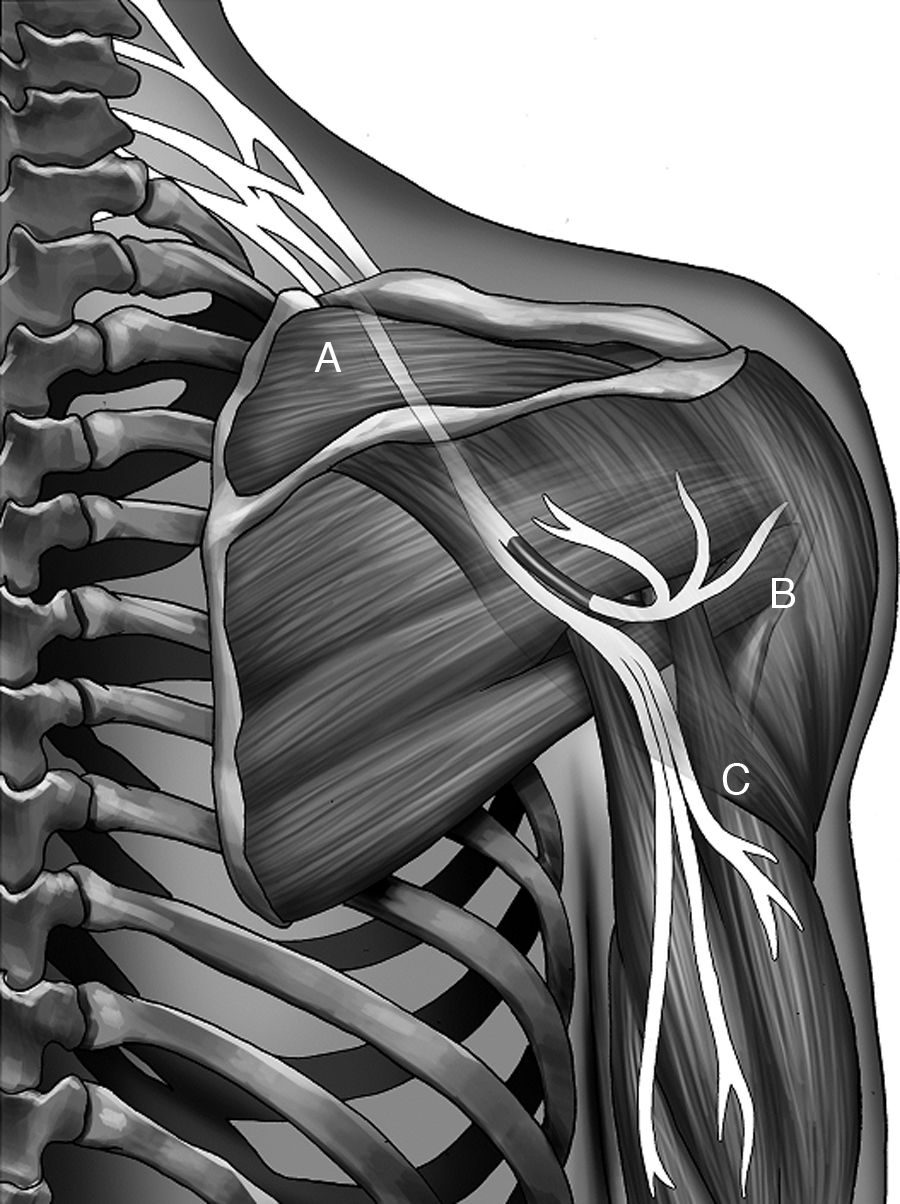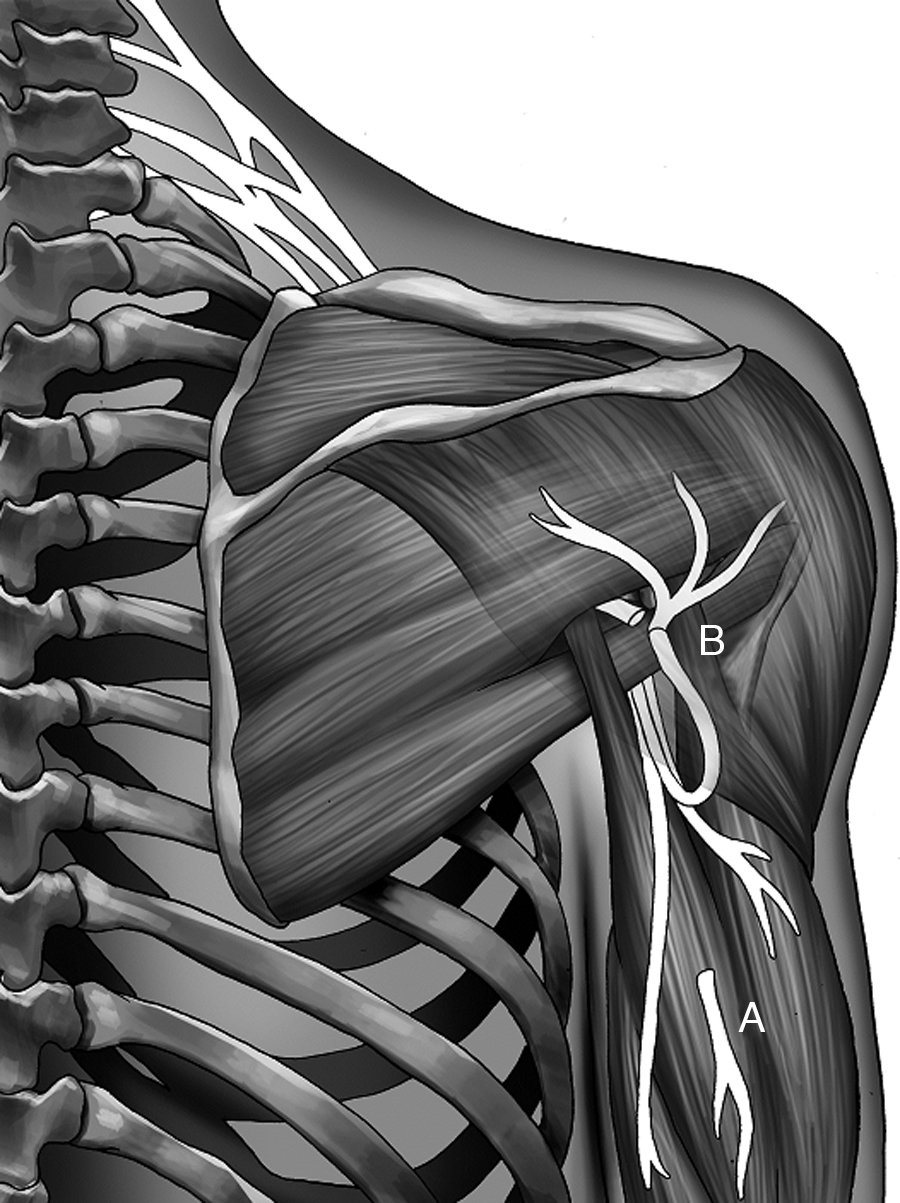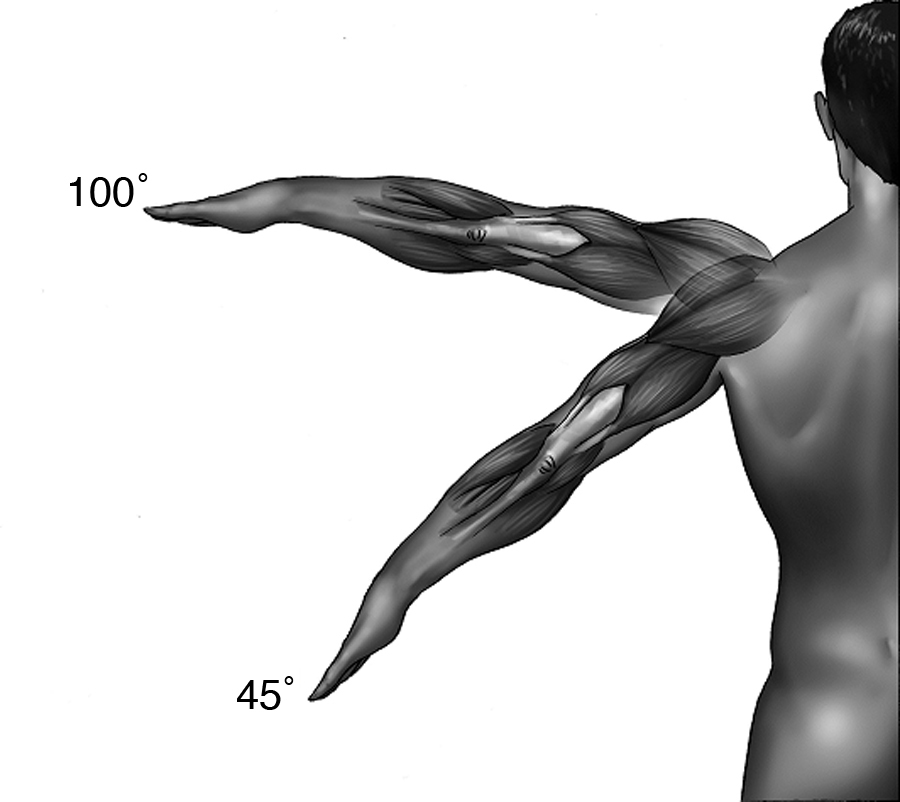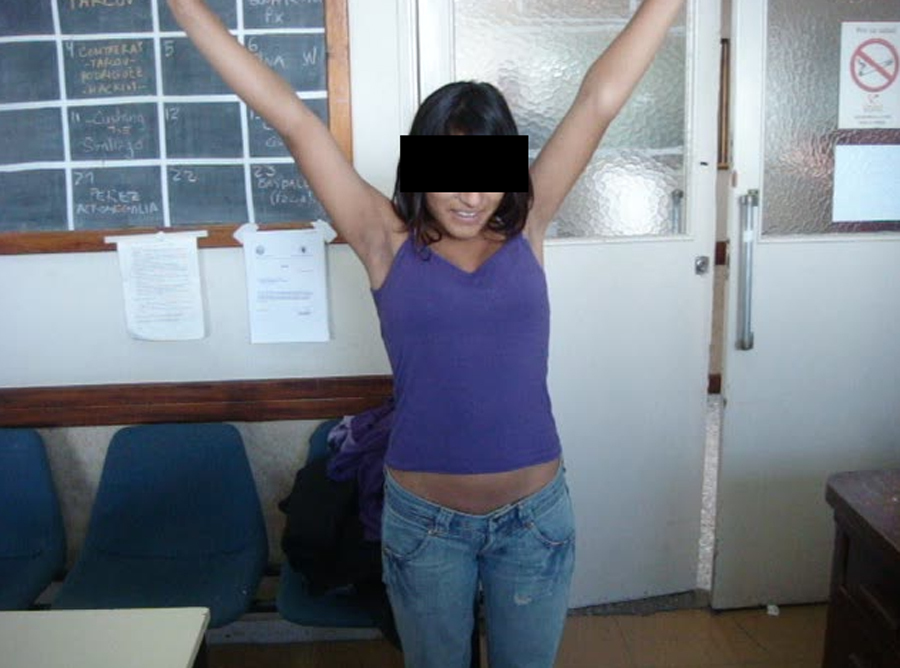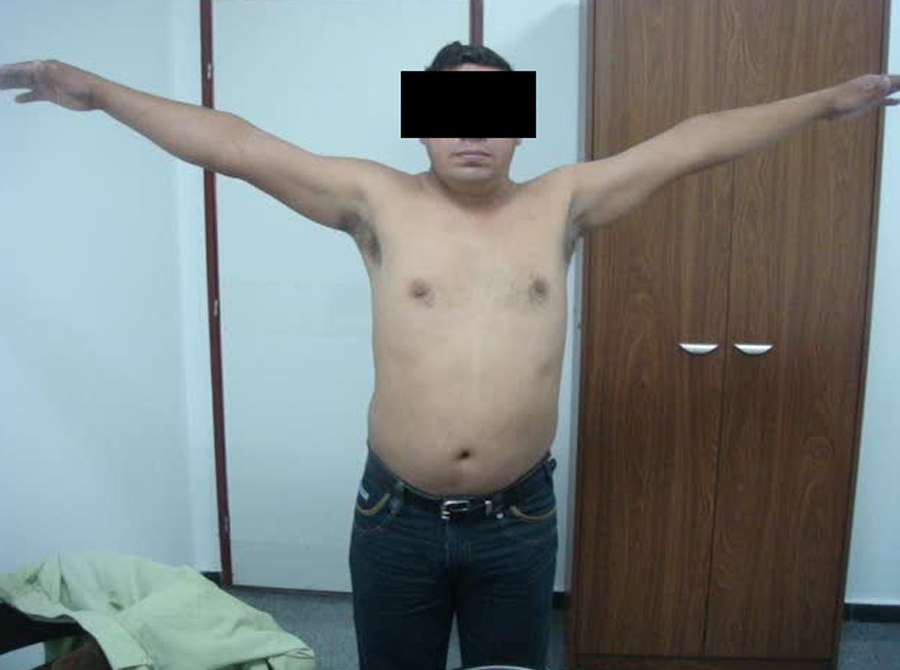To analyze the results of an initial series of four cases of traumatic injuries of the axillary nerve, treated by a nerve transfer from the triceps long branch of the radial nerve. An extensive analysis of the literature has also been made.
Materials and methodsFour patients aged between 21 and 42 years old presenting an isolated traumatic palsy of the axillary nerve were operated between January 2007 and June 2010. All cases were treated by nerve transfer six to eight months after the trauma. The results of these cases are analyzed, the same as the axillary nerve injuries series presented in the literature from 1982.
ResultsOne year after the surgery, all patients improved their abduction a mean of 70° (range 30 to 120°), showing a M4 in the British Medical Council Scale. No patient complained of triceps weakness after the procedure. These results are similar to those published employing primary grafting for the axillary nerve.
ConclusionsIsolated injuries of the axillary nerve should be treated with surgery when spontaneous recovery is not verified 6 months after the trauma. Primary repair with grafts is the most popular surgical technique, with a rate of success of approximately 90%. The preliminary results of a nerve transfer employing the long triceps branch are similar, and a definite comparison of both techniques with a bigger number of cases should be done in the future.
Analizar los resultados de una serie de 4 casos de lesión traumática aislada de nervio axilar reparada quirúrgicamente mediante neurotización radial. Asimismo se realiza una extensa revisión de las series publicadas hasta la actualidad en el tratamiento quirúrgico de la parálisis traumática aislada del nervio axilar.
Material y métodosPresentamos una serie de 4 pacientes, con edades comprendidas entre los 21 y los 42 años, con una lesión traumática aislada de nervio axilar, intervenidos quirúrgicamente entre enero de 2007 y junio de 2010. Todos los pacientes fueron sometidos a una transferencia nerviosa radial-axilar entre el sexto y el octavo mes del traumatismo. Además, se realiza una revisión de las series quirúrgicas de lesión aislada del nervio axilar desde 1982.
ResultadosTras un periodo de seguimiento mínimo de un año todos los pacientes mejoraron la abducción del hombro afecto entre 30 y 120°, con un promedio de 70°, mostrando un balance muscular M4 del Medical Research Council. Ninguno refirió debilidad muscular significativa en el tríceps ipsilateral a la lesión. Estos resultados, a pesar de la escasa casuística, son similares a los obtenidos con neurorrafia con injerto al analizar las series publicadas.
ConclusionesLas lesiones aisladas del nervio axilar son poco frecuentes. El tratamiento quirúrgico se recomienda ante la ausencia de recuperación clínico-neurofisiológica tras 6 meses desde el traumatismo. La neurorrafia con injerto es la técnica más utilizada, con un éxito próximo al 90%. La neurotización axilar con la rama a la porción larga al tríceps del nervio radial es una alternativa terapéutica en estos casos. En futuros estudios debería realizarse una comparación entre ambas técnicas para aclarar estadísticamente este tema.
Article

If it is the first time you have accessed you can obtain your credentials by contacting Elsevier Spain in suscripciones@elsevier.com or by calling our Customer Service at902 88 87 40 if you are calling from Spain or at +34 932 418 800 (from 9 to 18h., GMT + 1) if you are calling outside of Spain.
If you already have your login data, please click here .
If you have forgotten your password you can you can recover it by clicking here and selecting the option ¿I have forgotten my password¿.



